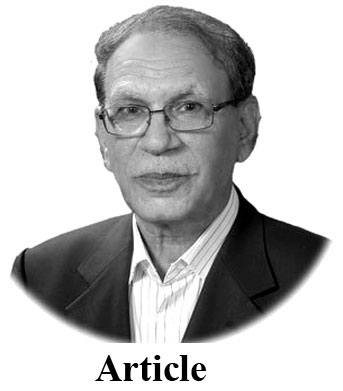Mohammad Jamil
LAST year a special court in India acquitted four men accused of bombing Samjhauta Express train linking India and Pakistan 13 years ago. The victims in the February 2007 blast at the Samjhauta Express train included 43 Pakistani citizens and 10 Indians. The identity of the remaining 15 could not be established. Mumbai Anti-Terrorist Squad (ATS) in India had claimed that a serving Army officer Lieutenant Colonel Prasad Shrikant Purohit, who was arrested in connection with the Malegaon blast, was also involved in 2007 Samjhauta blasts. ATS said to the Nashik Court that the accused had used RDX to carry out the blast. The anti-terror branch of Mumbai Police had said that Army RDX was used, and not sourced from across the border (Pakistan). Despite those findings, the special court cited the lack of evidence for the acquittal of Swami Aseemanand, Kamal Chauhan, Rajinder Chaudhary and Lokesh Sharma who were charged by the NIA.
The court had ruled: “Prosecution has failed to prove the case, so the court acquitted all of them,” defence lawyer Mukesh Garg told reporters outside the court in the northern state of Haryana. According to India’s National Investigation Agency (NIA), which probed the case, the attack was carried out by a Hindu far-right group, adding that it was to avenge similar attacks allegedly carried out by Muslim groups with the aim of threatening the unity and integrity of India. Swami Aseemanand, alias Naba Kumar Das, a former member of the Hindu nationalist group Rashtriya Swayamsevak Sangh (RSS), was described as mastermind in the conspiracy, who met at different locations across India to plot bombings targeting Muslims. This was the second major setback for the NIA in a terror case allegedly involving Hindu groups, as Indian courts turned a blind eye to the evidence against the extremists.
In April 2018, the NIA court had acquitted all the 11 men charged by the investigating agency in the Mecca Masjid blast case where six people were killed in the southern city of Hyderabad. Pakistan had summoned India’s Ambassador to protest against the acquittal. In a statement, Pakistan called it a “travesty of justice that reflected an “Indian state policy of promoting and protecting Hindu terrorists”. The Samjhauta Express, also called the Friendship Express, was started in 1994 as a goodwill measure to help families separated by the 1947 subcontinents partition. The Samjhauta Express bombing was part of a string of similar attacks in 2006 and 2007 where the targets were ostensibly Muslims, and investigations by the NIA pointed to the role of Hindu groups. The first was in September 2006 when a string of explosions was set off at a Muslim cemetery in Malegaon, which killed at least 40 people.
In May 2007, a blast in the 400-year-old Mecca Masjid in Hyderabad city killed six people and five more died when the police opened fire on people who had staged agitation at the site. At least two people were killed when a bomb went off at the Ajmer Dargah in the northern state of Rajasthan in 2007. Swami Aseemanand, who featured prominently in the course of the investigations, had said in a taped interview in 2014 to Indian magazine ‘The Caravan’ that some of the worst attacks in the country were sanctioned by the then-RSS top leadership. There was substantial evidence that Purohit procured 60 kg of RDX from Jammu and Kashmir in the year 2006. A part of that RDX was suspected to have been used in Samjhauta Express train explosion and Malegaon blasts.
Maharashtra police had told the court that Purohit gave a part of the RDX to one Bhagwan who was suspected to have used it in Samjhauta Express blast. “The RDX was also suspected to have been used in Malegaon bomb explosion on 29 September 2006, therefore Purohit’s interrogation was necessary”, the public prosecutor had told the court. In addition to Colonel Prasad Purohit (a serving officer) two other army officers were arrested in connection with September 29 Malegaon bomb blasts, five days after Sadhvi Pragya Singh Thakur and two others were held in the case. The two arrested were identified as Major (r) Ramesh Upadhyay from Pune and Sameer Kulkarni from Indore in Madhya Pradesh. Shabnam Hashmi a member of National Integration Council in a letter written to the then Prime Minister Manmohan Singh gave the details of the terrorist acts.
However, agencies had immediately accused some Muslim organizations without any proof. She also demanded of the government to investigate and find the real truth behind the dastardly acts. Though, Human Rights Watch and other organizations often highlight the plight of the minorities in India, yet international media plays down such reports and continues to eulogize so-called secular India. It has become a norm that on every bomb blast or an act of terrorism in India, the fingers of accusation are pointed towards Pakistan and its linkage with Muslim organizations in India. Hundreds of innocent young boys are picked up and illegal detentions, torture, arrests, harassment of their families, forcing the families and victims to sign blank papers.
Indian intelligence agencies had accused Harkat-ul-Jihad-e-Islami (JUII) activist alias Bilal, an Indian national, of being involved in Samjhauta blasts who acted on the instructions of JUII Bangladesh chapter. They said that Bilal was in Karachi, which was not true. India often names Muslim organizations, which in fact do not exist. Anyhow India and Pakistan had identical stance that these blasts were carried out to disrupt the process of improving relations between the two countries. However, on the demand of Human Right Watch and other non-governmental organizations the Indian government acknowledged that Hindu extremist organizations were behind the terrorists’ activities.
—The writer is a senior journalist based in Lahore.










